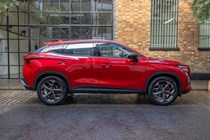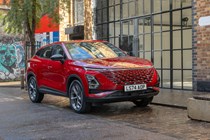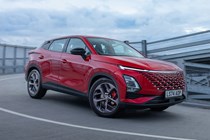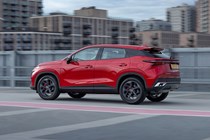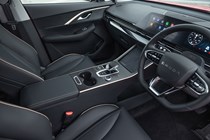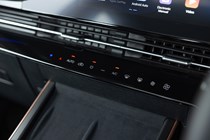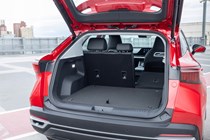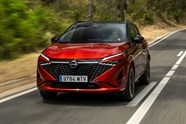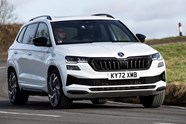OMODA 5 review
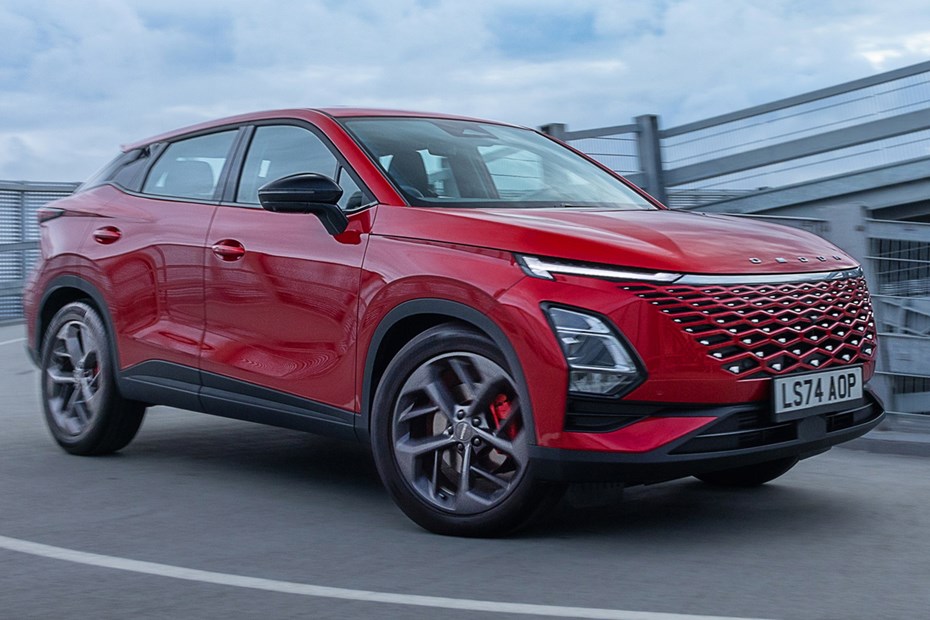
At a glance
| Price new | £23,990 - £27,490 |
|---|---|
| Used prices | £16,807 - £23,184 |
| Road tax cost | £195 |
| Insurance group | 27 - 33 |
Get an insurance quote with

|
|
| Fuel economy | 31.2 mpg |
| Miles per pound | 4.6 |
| Number of doors | 5 |
| View full specs for a specific version | |
Available fuel types
Petrol
Pros & cons
- Spacious inside for passengers
- UK dealer network and parts warehouse
- Five-star Euro NCAP rating
- Feels outdated to drive
- Not very fuel efficient
- Small boot limits practicality
OMODA 5 SUV rivals
Overview
The Omoda 5 is unusual, in that it’s from one of the increasing ranks of brand new Chinese car manufacturers but it isn’t powered by an electric motor. Instead you’ll find a 186hp 1.6-litre turbo petrol engine under the bonnet, connected to a seven-speed dual-clutch automatic transmission. With a temptingly cheap list price, could this decision to offer a conventional power unit get the Omoda 5 onto our list of the best SUVs?
Without wishing to break any hearts this early in the review, it’s safe to say it doesn’t. But as with the MG HS, the Omoda 5 does offer a budget alternative to the likes of the Nissan Qashqai, Skoda Karoq and Kia Sportage, performing basic family SUV duties while saving you in the region of £5,000. More once you start looking at equivalent specification and power output.
It’s less convincing when it comes to monthly finance pricing, however, where the expected second-hand value of established brands makes their monthly costs more competitive.
There is an electric version of this new SUV as well – which we’ve covered in a separate Omodo E5 review – while our explainer page details on how we test cars.
What’s it like inside?
At first glance, it may seem impressive in the Omoda 5’s cabin. Clearly some thought has been put into the use of colours, and the material quality is pretty good, too – especially for the money. It’s more than roomy enough for four adults, with five fitting in at a squeeze.
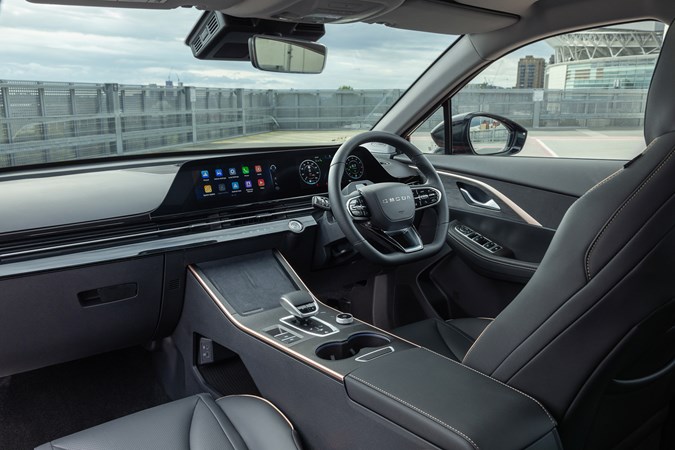
However, the twin 10.25-inch screens on the top of the dashboard that give you infotainment and function as digital instruments don’t deal very well with bright sunlight. The infotainment software is pretty straightforward, though, and while the lack of physical buttons will take some adjustment, both the infotainment and climate control feel better implemented in this petrol model than they do in the electric version.
For an SUV that’s a similar size to a Qashqai, the boot is rather small – the scant 380 litres of space presumably not helped by the fastback roofline. For context, the Qashqai has upwards of 455 litres.

It’s a shame there are no paddles to control the gearbox on the back of the steering wheel; you can take manual control via the stubby gear selector on the centre console but it’s not a very satisfying experience.
What’s it like to drive?
The Omoda 5 is best described as acceptable. Which is to say it’ll get you around the place just fine, but you won’t find very much to really enjoy about it.
Performance from the 1.6-litre turbo is brisk but not rapid, with 0-62mph taking 7.9 seconds. It isn’t an awful thing to listen to, but the gearbox is rather old fashioned in its automatic programming, and we found it likes to kick-down to a lower gear rather often. So you will be hearing the engine whenever you accelerate, almost no matter how gently.
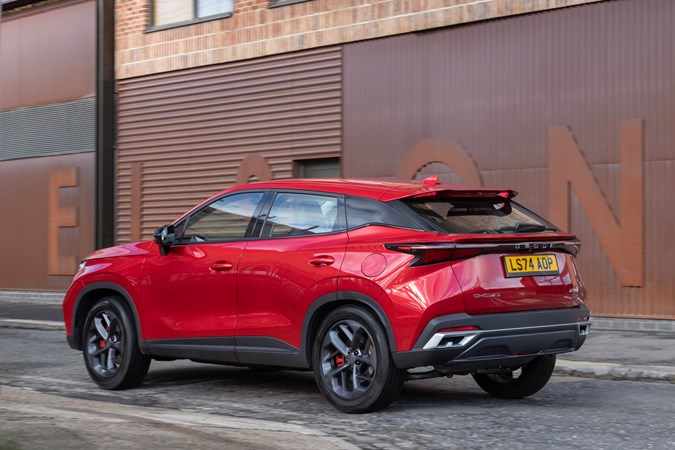
Being gentle is recommended, incidentally, as the official fuel economy figure is just 31.4mpg. With no mild-hybrid or other fuel-saving technology, this is not going to be a cheap car to run. The 170g/km CO2 emissions underline this.
The steering, meanwhile, doesn’t offer much feedback or even resistance during the initial few degrees of lock. Fine if you’re just pottering along, but not at all reassuring if you want to drive a little quicker and actually quite tiring when going in a straight line at motorway speeds.
Compounding this lack of sophistication is a suspension set up that’s at once a little too soft and a little too firm. The softness leads to a sort of wallowing behaviour when turning into tighter corners, the firmness means we were feeling too much of the road beneath.
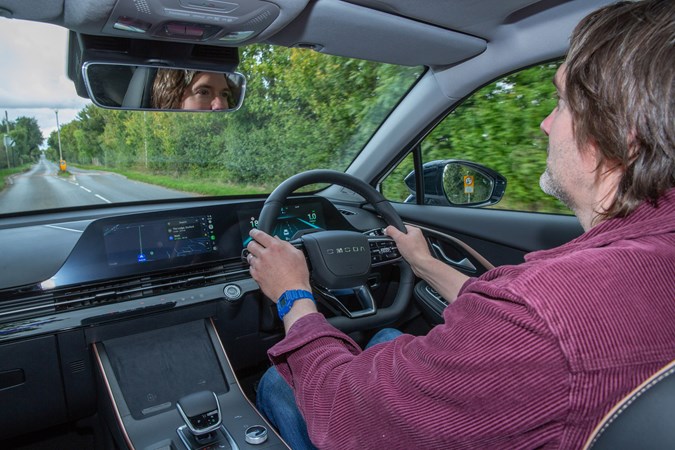
Offset bumps are particularly unpleasant, as you’ll find yourself being tossed from side to side as you progress. The structure doesn’t seem to be especially stiff, which doesn’t help, with an unusual – by modern standards – amount of vibration through the pedals and seat.
There’s also a lot of road noise, meaning you have to raise you voice slightly to talk to even the front passenger. All told, while it does the job of getting you from point A to point B, the Omoda can’t compete with the depth of quality exhibited by established mainstream rivals.
What models and trims are available?
There’s just the one engine and gearbox choice in the Omoda 5, but you do get to pick between two trim levels: Comfort and Noble.
First thing to mention is that you get a lot of active safety aids as standard, alongside no less than 11 airbags. This has helped the Omoda to a five-star Euro NCAP rating, with top marks from equivalent global organisations as well. Practical, useful features include blindspot monitors and adaptive cruise control.

In addition to this, the entry-level Omoda 5 Comfort includes eight-speaker Sony hi-fi system, 50W wireless charging (with cooling system to stop your phone overheating), wireless Android Auto and Apple CarPlay, front and rear parking sensors, a reversing camera, and keyless go.
The upgrade to Noble adds a 360-degree camera system – which includes a curious rear three-quarter perspective view that pops up at junctions – dual-zone air-conditioning, extra air filtration for improved cabin air quality, heated front seats and a powered tailgate.
What else should I know?
We’ve been starting to hear nightmarish tales about parts supply for some Chinese brands – including established ones, such as MG – so it’s reassuring to hear that Omoda has established it’s own dedicated parts supply warehouse in the UK. And it’s done so in association with DHL, meaning it should be able to deliver parts quickly throughout its dealer network.
And what’s more, that dealer network takes the form of traditional physical locations you can actually visit. There are 60 already and 20 more in the works – with the ambition to reach 100 by the end of 2024. The grand total should be around 120, and reached in 2025.
Omoda has also been working with British industry body Thatcham to establish repair procedures and achieve affordable insurance groupings – although these still aren’t super low.
Last important note is that all Omodas come with a seven-year / 100,000-mile warranty. RAC breakdown cover is also provided, which will renew every time you get the car serviced at a dealer.
Click through to the next page to read our verdict on the Omoda 5.



